Find the focal length fo the lens shown in the figure.
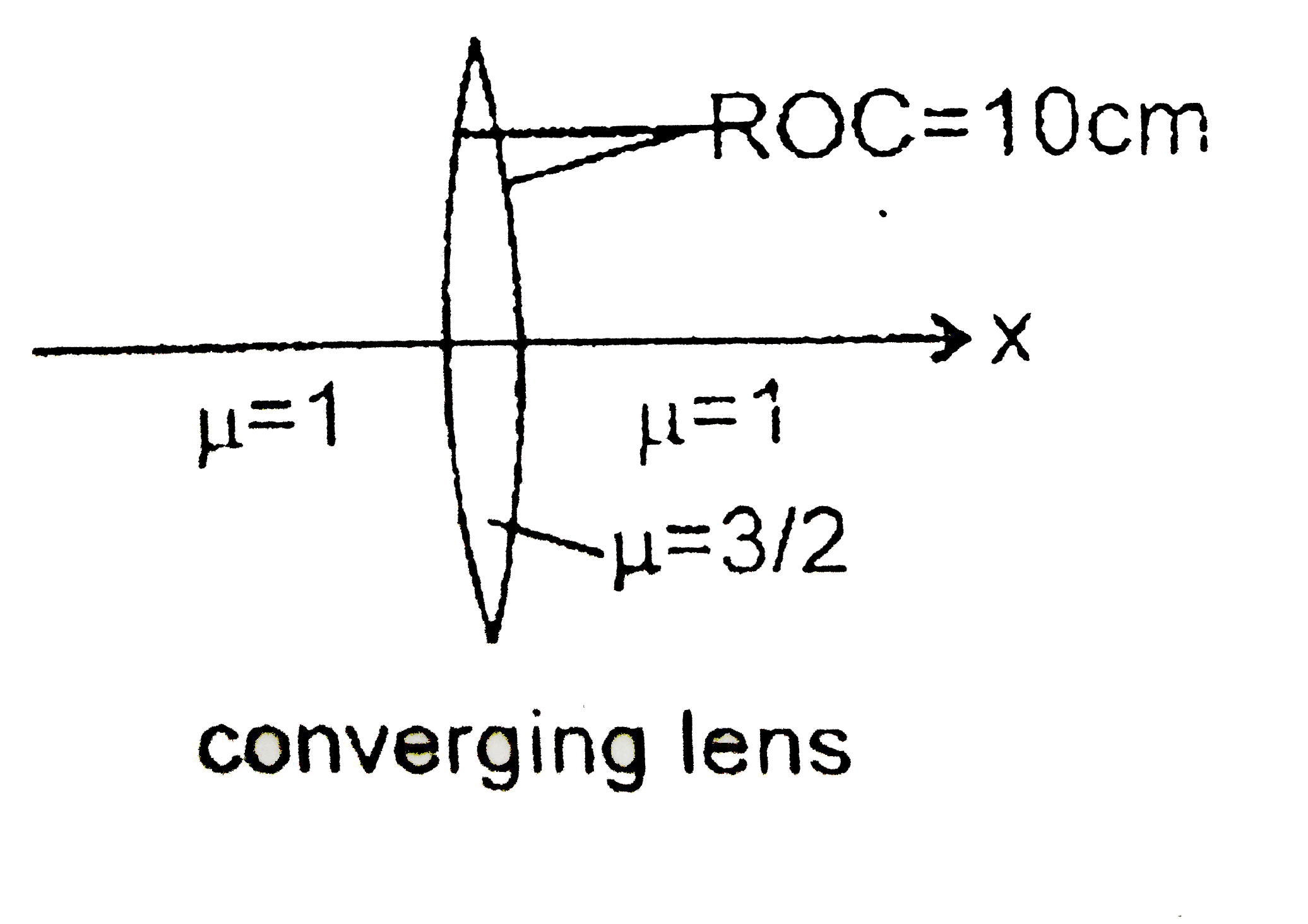
∵1f=(n≠t−1)(1R1−1R2)
⇒1f=(3/2−1)(110−1(−10))⇒1f=12×210⇒f=+10cm
Topper's Solved these Questions
- BOOK - RESONANCECHAPTER - GEOMATRICAL OPTICS EXERCISE - Problem33videos
GEOMATRICAL OPTICS
- BOOK - RESONANCECHAPTER - GEOMATRICAL OPTICS EXERCISE - Exercise-1142videos
GEOMATRICAL OPTICS
- BOOK - RESONANCECHAPTER - EXPERIMENTAL PHYSICSEXERCISE - PART -II10videos
EXPERIMENTAL PHYSICS
- BOOK - RESONANCECHAPTER - GRAVITATIONEXERCISE - HIGH LEVEL PROBLEMS16videos
GRAVITATION
Similar Questions
Find the focal length of the lens shown in the figure. The radii of curvature of both the surfaces are equal to R
 View Solution
View SolutionFind the focal length of the lens shown in the Fig..
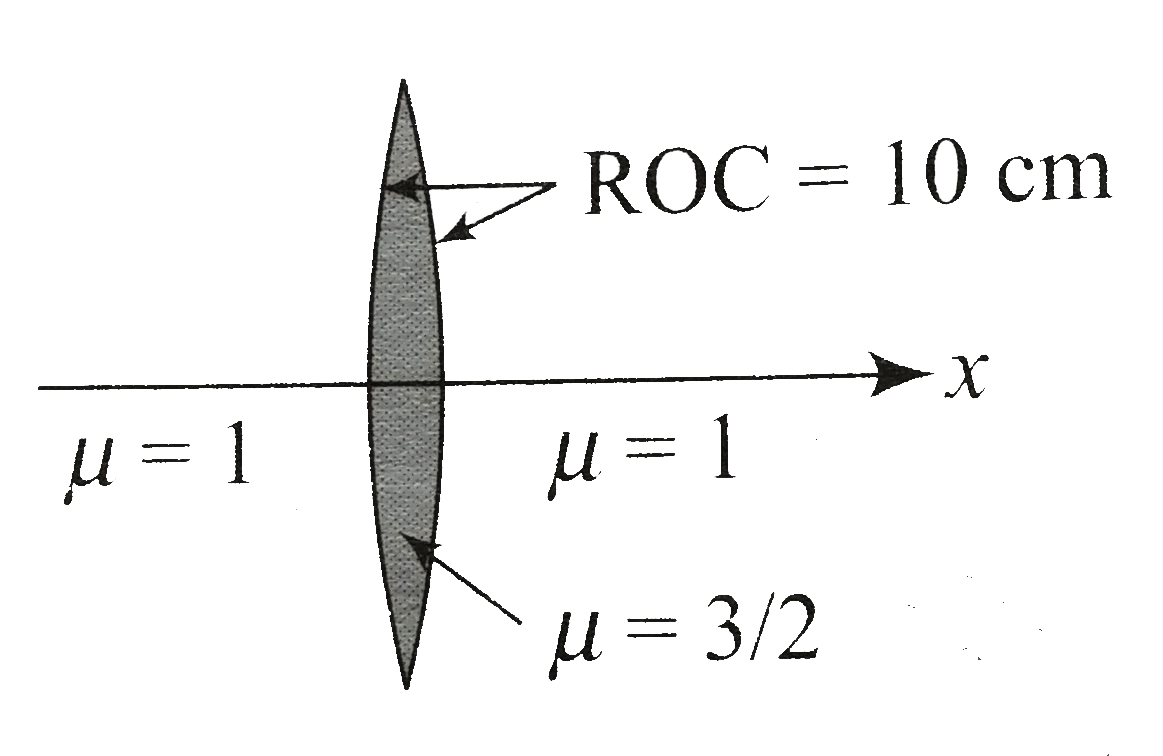 View Solution
View Solution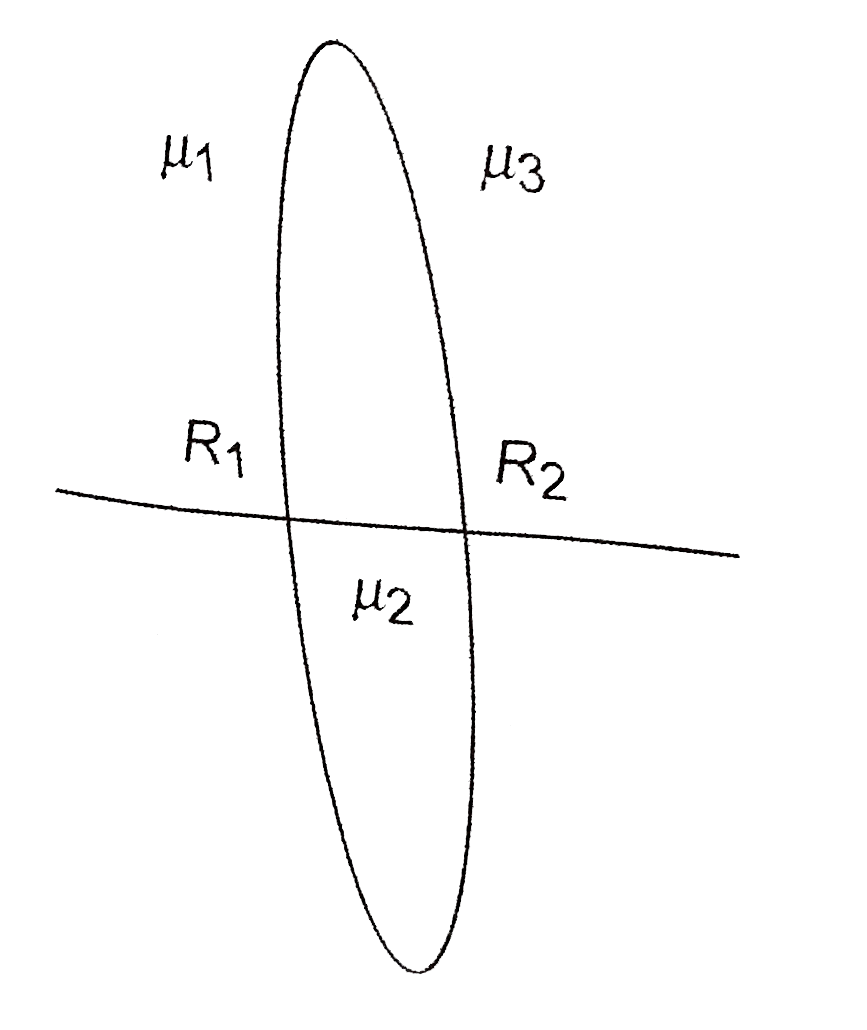
Find the focal length of the lens as shown in figure.View SolutionCalculate the focal length of the lens shown in the figure.
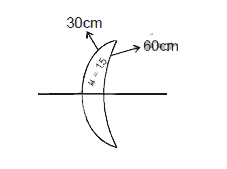 View Solution
View SolutionFind the focal length of the lens shown in Fig.
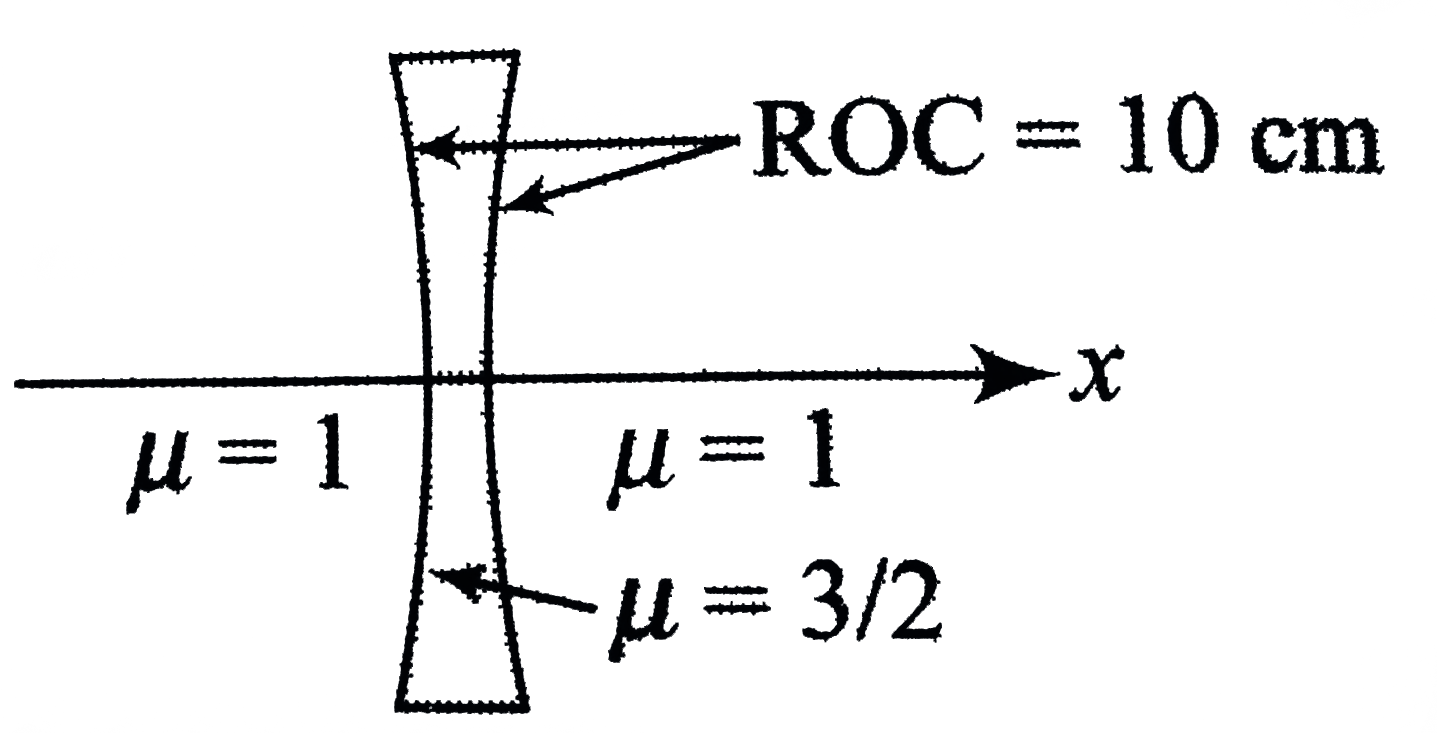 View Solution
View SolutionFind the focal length of the lens shown in Fig . The radii of curvature of both the surfaces are equal to R.
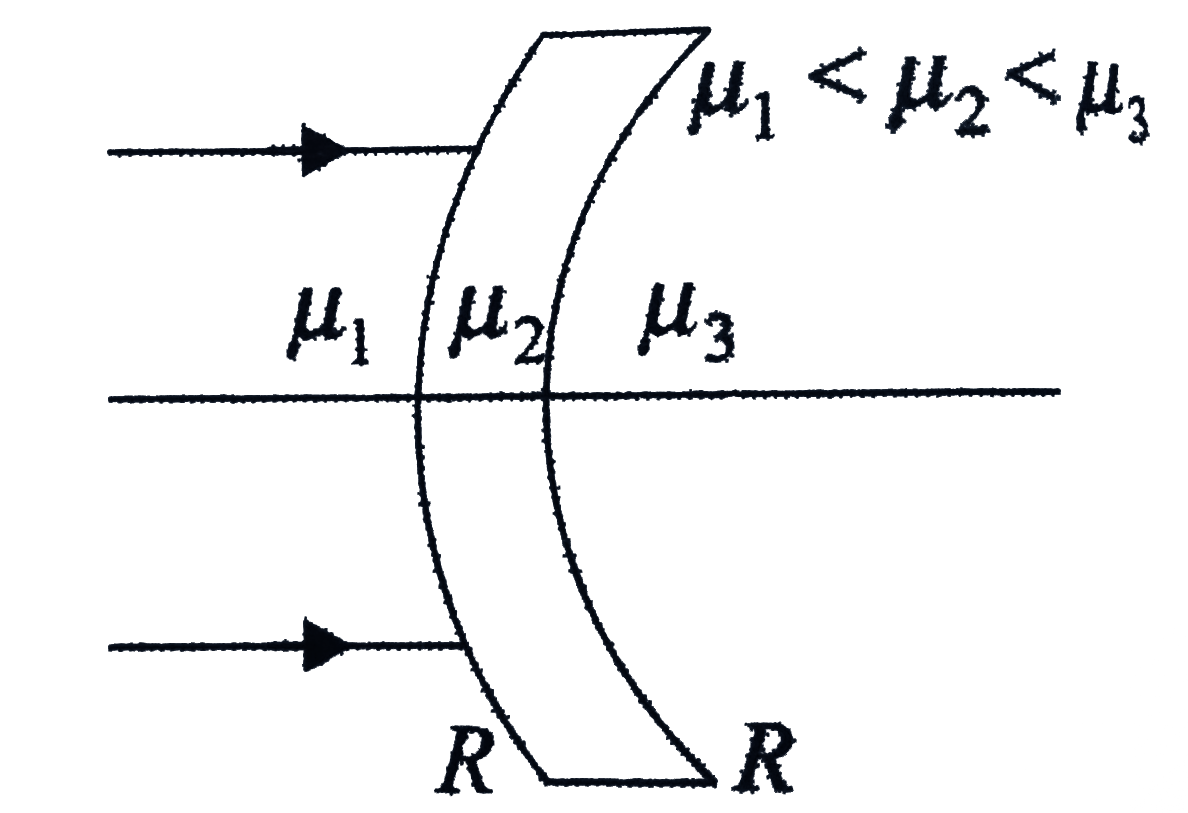 View Solution
View SolutionA convex lens of glass (μ=1.5) is formed by combining two surfaces of radii R1=60cm and R2=30cm . It is cut into two parts in two different ways as shown in Figure .
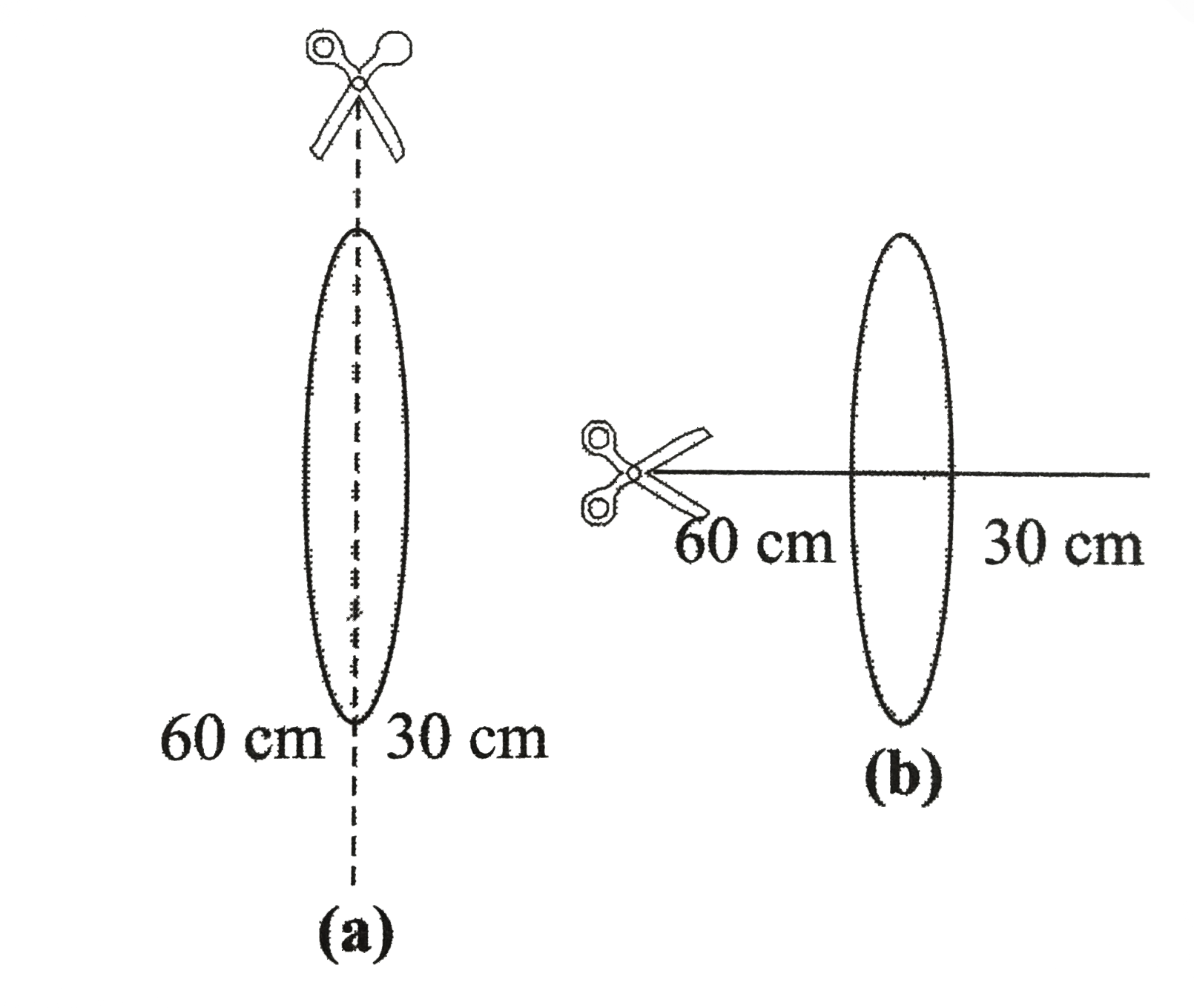
Find:
a. the focal length of the lens.
b. in figure (a), the focal length of left portion and that of the right portion.
c. in figure (b), the focal length of the upper part and that of the lower part.View Solution
Find focal length of the system as shown if figure.
Find image position.View Solution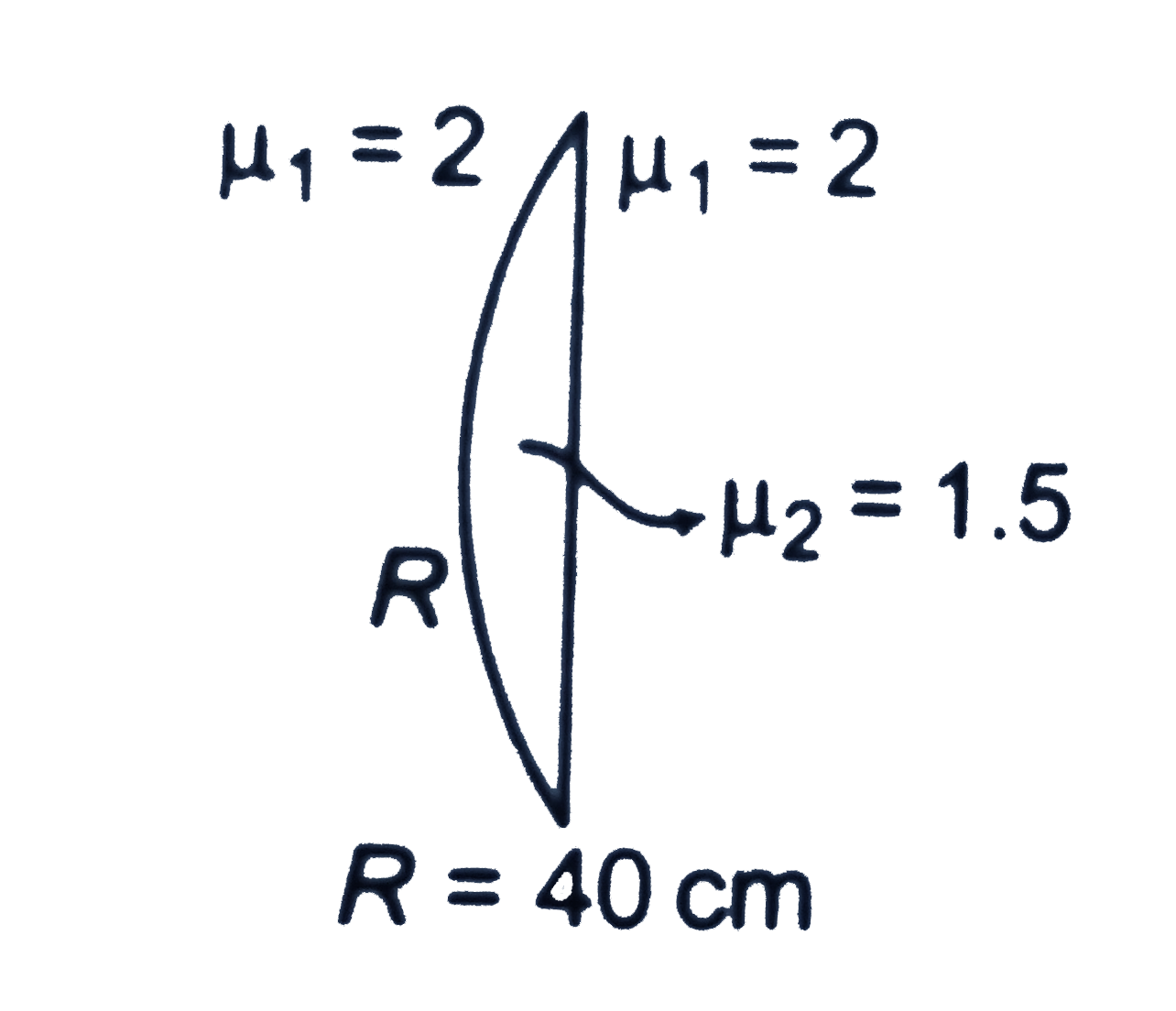
Find focal length of the system shown in figure from left hand side.View SolutionSee the figure
Find the equivalent focal length of the combination shown in the figure and position of image.
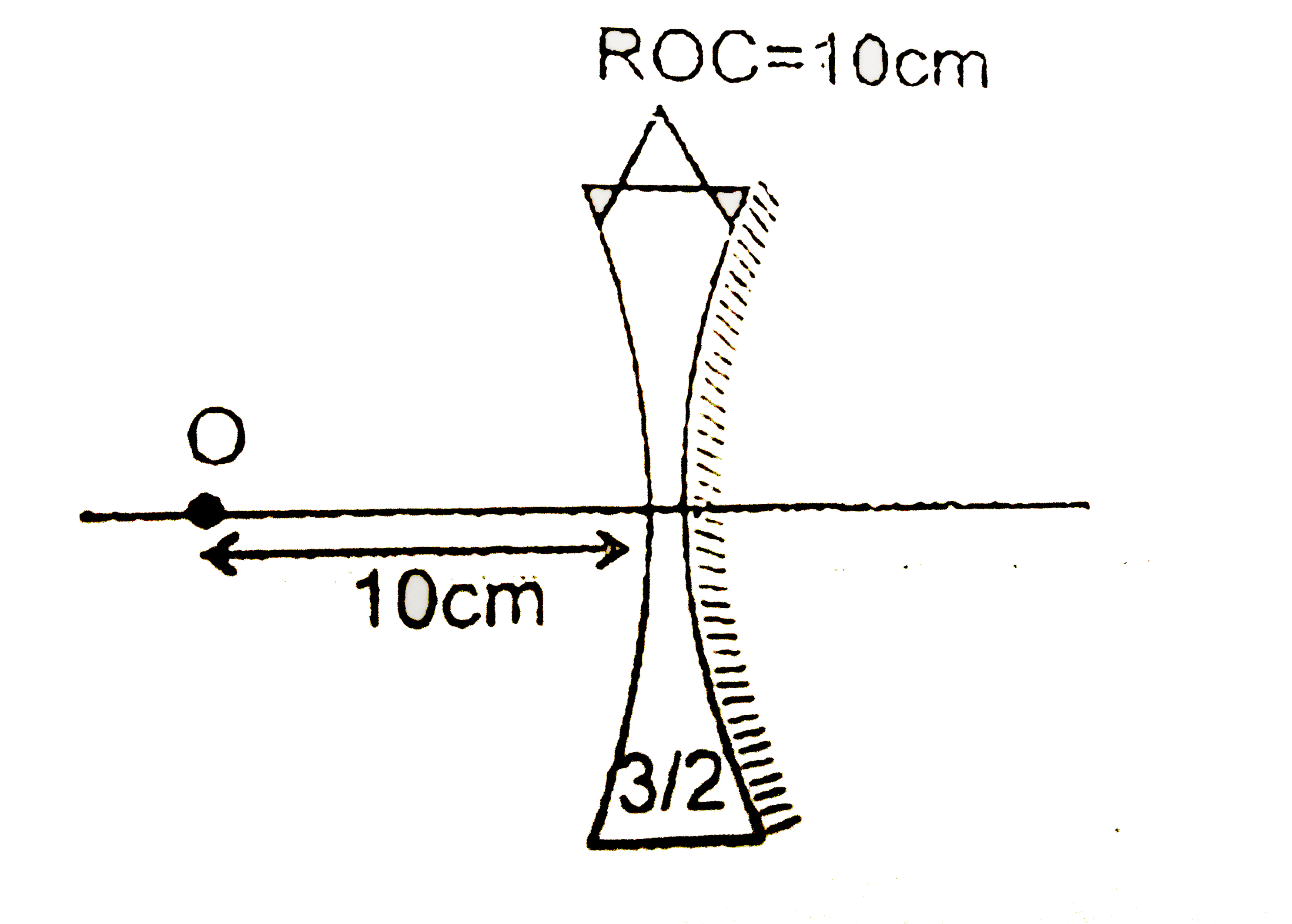 View Solution
View Solution

